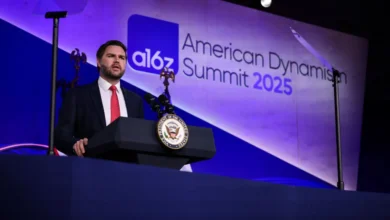Trump Admin Updates Cybersecurity Rules, Overhauls Biden Order

▼ Summary
– President Trump issued a new cybersecurity Executive Order replacing previous orders by Obama and Biden, focusing on foreign malicious actors.
– The order limits cyber sanctions to foreign actors, reversing broader Biden and Obama policies to avoid domestic political misuse.
– It removes Biden-era requirements like vendor security compliance proofs, AI cyber defense research, and post-quantum encryption mandates.
– Key Biden initiatives were revised or eliminated, including IoT device labeling, supply chain rules, AI guidelines, and phishing-resistant authentication.
– The new order prioritizes secure software development, border gateway security, and AI-driven vulnerability detection over censorship.
The Trump administration has unveiled a sweeping update to U.S. cybersecurity policy, replacing key executive orders from both the Obama and Biden eras with a new framework focused on foreign threats rather than domestic regulation. The revised approach narrows the scope of cyber sanctions exclusively to malicious foreign actors, explicitly excluding election-related activities and domestic political opponents from enforcement.
One of the most significant changes involves rolling back Biden-era mandates that required software vendors to meet stringent federal security benchmarks. The updated policy also scraps initiatives tied to AI-driven cyber defense research, quantum-resistant encryption adoption, and IoT device labeling programs designed to bolster consumer transparency. According to the White House, these measures were overly burdensome and diverted attention from core security priorities.
The overhaul extends to supply chain security rules, with the administration easing certain procurement restrictions on software and hardware vendors. Additionally, portions of Biden’s AI cybersecurity guidelines, particularly those connecting AI safeguards to broader regulatory structures, have been revised or eliminated entirely. The move could reshape how artificial intelligence is integrated into national cyber defense strategies moving forward.
Despite these rollbacks, the administration emphasized its commitment to strengthening cyber resilience through alternative measures. Key initiatives include advancing secure software development practices within federal agencies, tightening border gateway protections against network hijacking, and shifting AI cybersecurity efforts toward vulnerability detection rather than content moderation. The White House also plans to introduce machine-readable security standards and IoT trust designations to help consumers identify safer connected devices.
Officials framed the changes as a necessary course correction, arguing that previous policies introduced unnecessary complexity. “This administration is laser-focused on technical excellence and operational discipline to safeguard America’s digital infrastructure,” a White House statement read. The revised order aims to streamline cybersecurity efforts while maintaining defenses against foreign adversaries—a balancing act that will likely spark further debate in policy circles.
(Source: INFOSECURITY Magazine)





